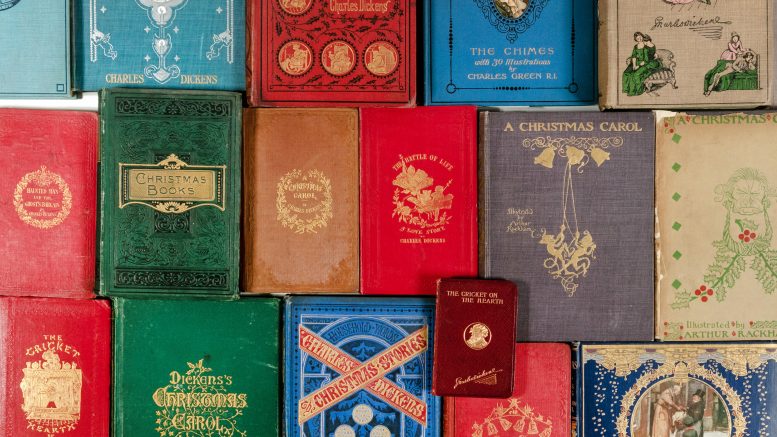Just in time for Christmas season, Charles Dickens Museum opened its latest exhibition “Beautiful Books: Dickens and the Business of Christmas.” Let’s take a quick look inside…
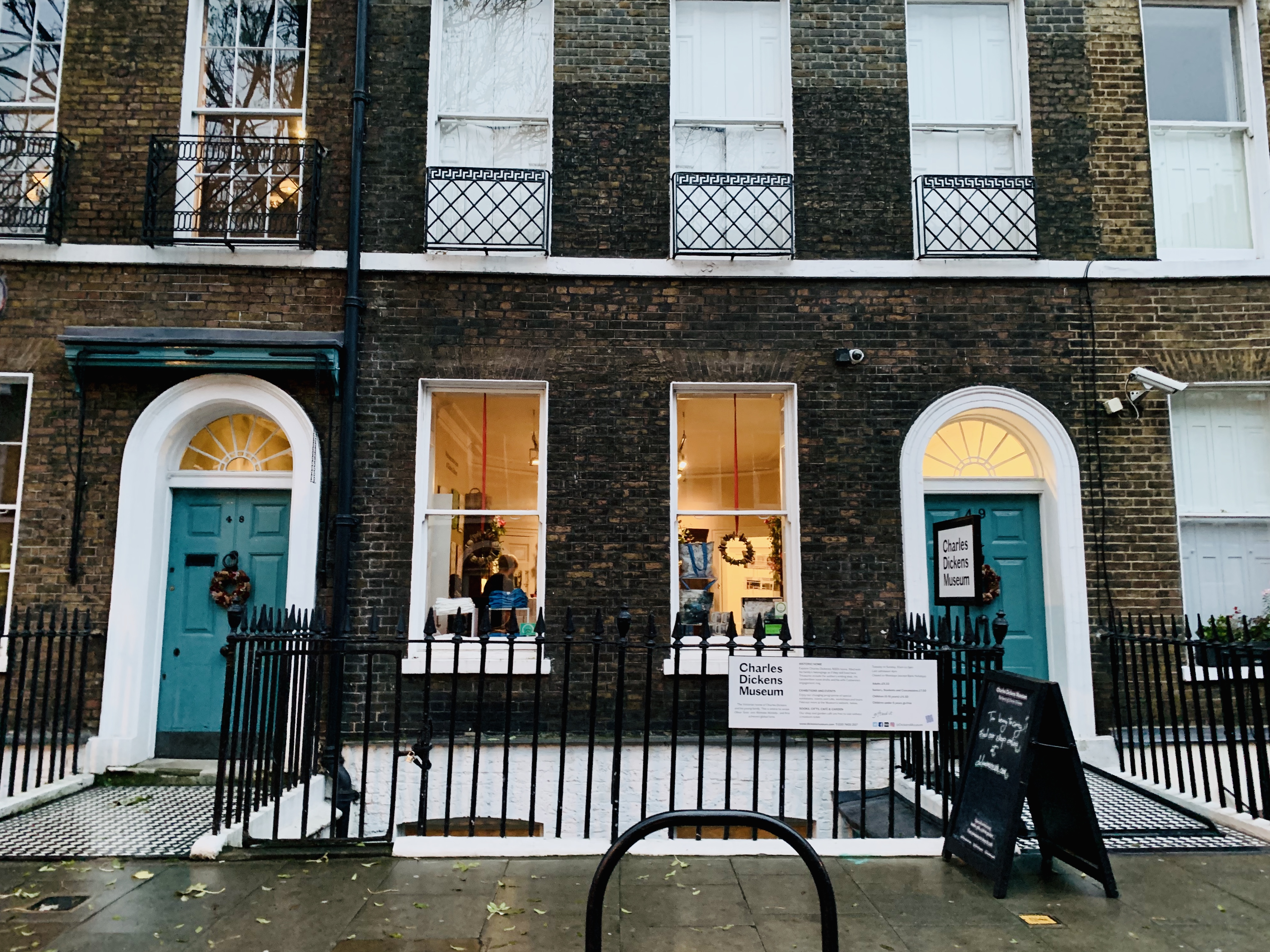
Charles Dickens Museum. / Source: Neringa Ruseckaite
So, Charles Dickens invented Christmas?
A popular misunderstanding among people is that Charles Dickens and the Victorians invented a celebration we call Christmas. It is false. However, he did shape the holiday into the one we know today.
Although the celebration was not popular, especially amongst upper and upper-middle classes, Dickens was very familiar with its festivities. His enthusiasm for Christmas probably came from his grandparents, who were domestic workers at a stately home famous for its Christmas parties. As he matured, Dickens was as invested in Christmas as ever.
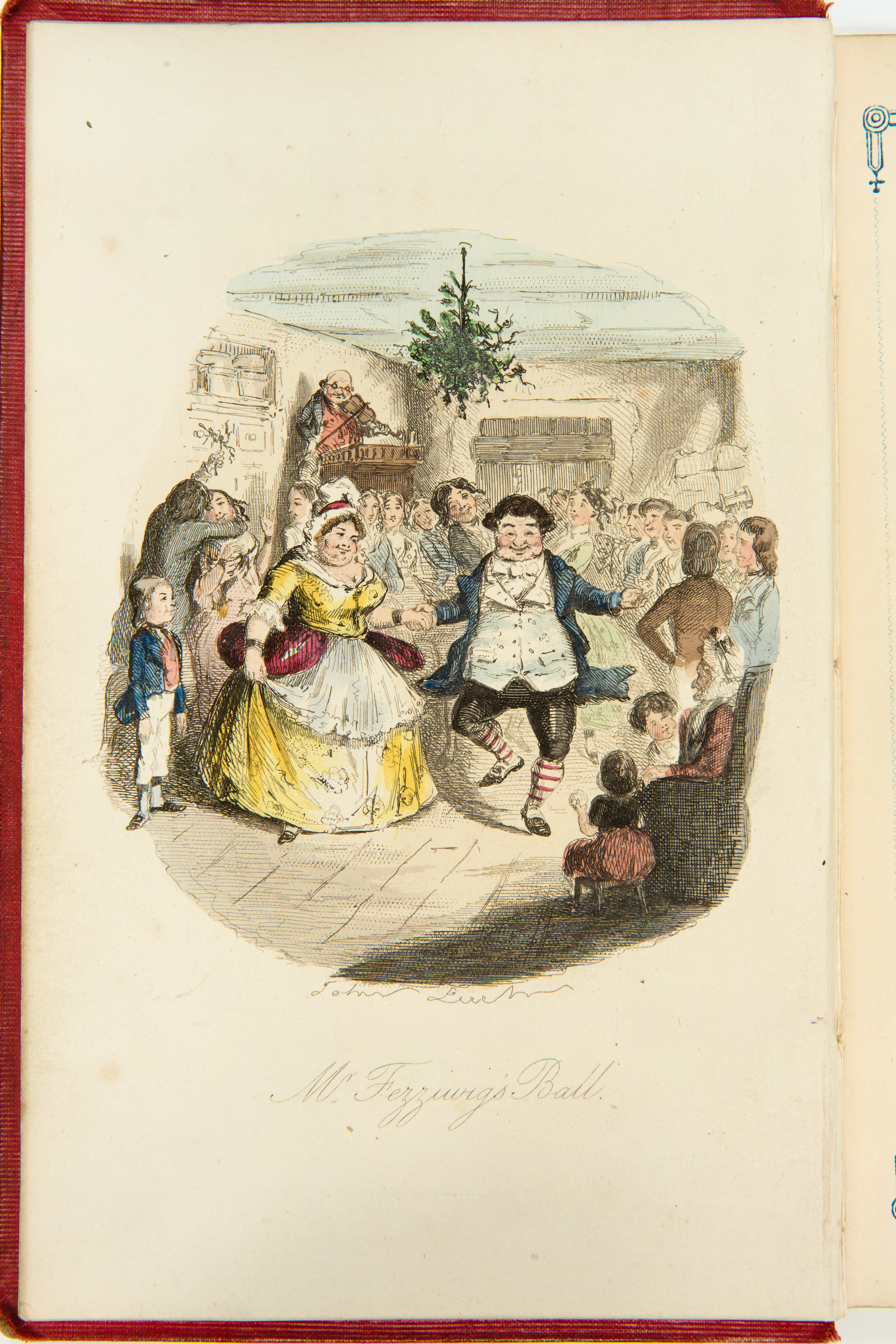
A Christmas Carol first edition. Illustration by John Leech. / Courtesy of Charles Dickens Museum
Changing Society
The 19th century was a time of change in England – the inventions of the Industrial Revolution were having a great effect on society.
People were earning more disposable income and the levels of literacy among the working and middle classes had risen stupendously. In 1841, 67% of men and 51% of women could read. By 1891 these numbers had reached 94% and 93%.
The demand for literature to read was growing vastly. And so was the supply – newly engineered steam engines revolutionised the printing industry which could now produce thousands of books in a matter of hours.
The conditions for reading had been improving as well, however not for everybody. Although gaslighting was available, not everyone could afford it.
Majority of the public was reading in the candlelight, more specific – rushlight, which has to be trimmed about every ten minutes. Dickens also had oil lamps in his collection, which could provide cleaner light.
Gift of Choice – a Beautiful Book
Books were already a staple item for the holiday season. But not any books, almanacks – “a mix of diary, lists of facts, dates and astrology”.
In the 1820s, another type of books emerged – gift books. These were prose books bound in the finest cloth and decorated with the steel engravings. Gift books were quite pricey and in the case that a man gave this gift to a woman, it would mean that he really liked her.
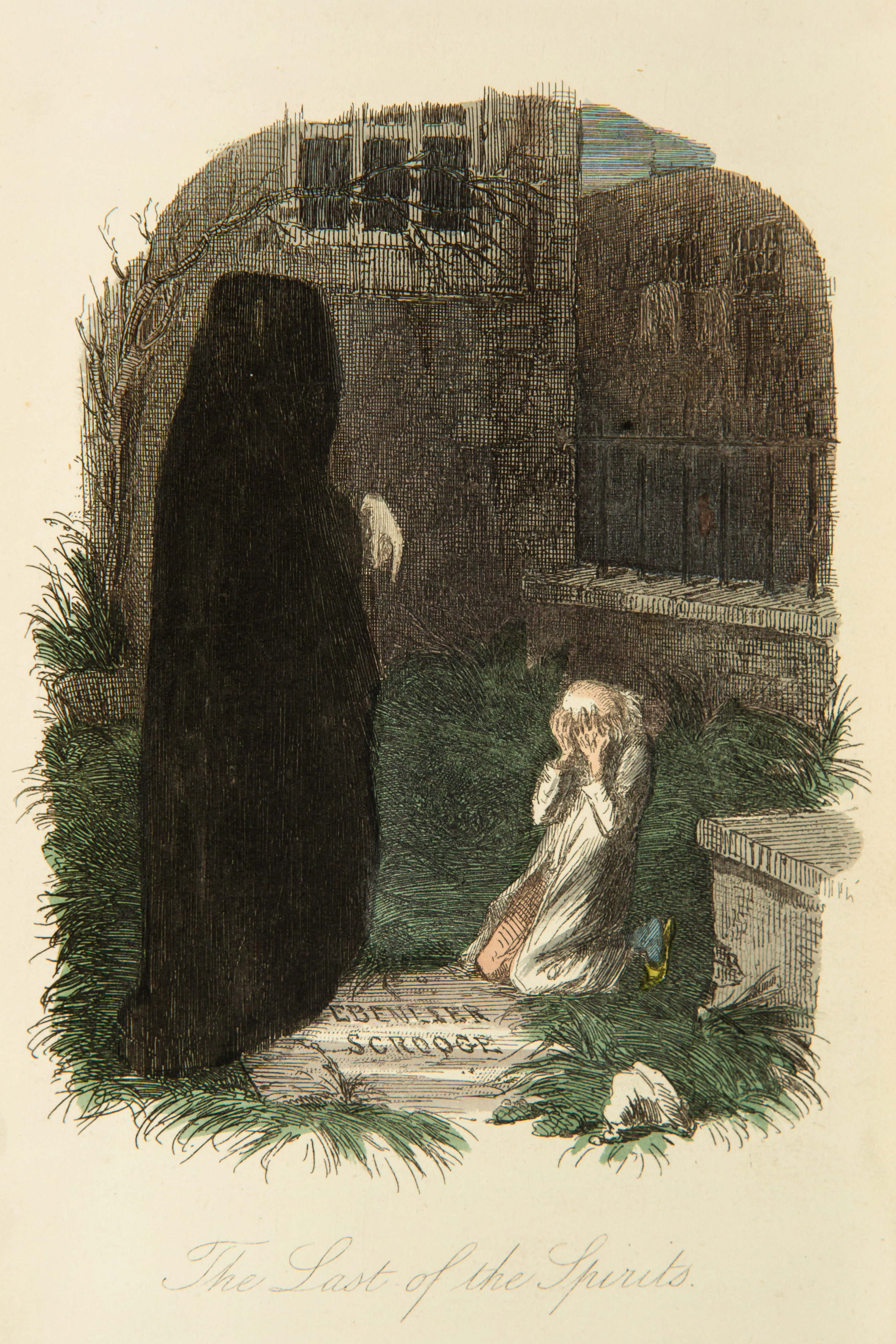
A Christmas Carol first edition. Illustration by John Leech. / Courtesy of Charles Dickens Museum
Dickens recognised that books are a perfect gift as well. He was feeding the market annually with his Christmas stories.
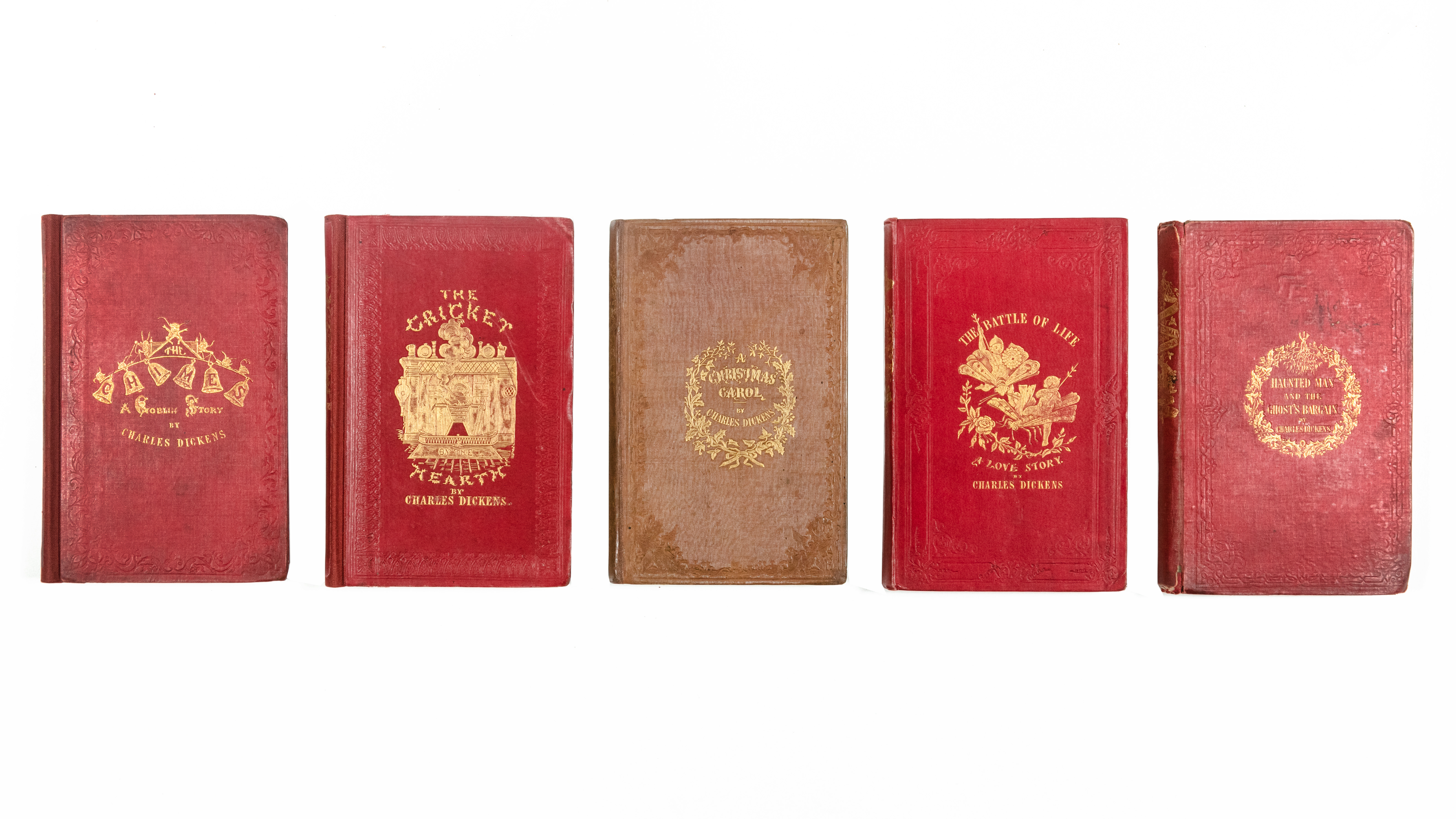
First editions of the Christmas books. / Courtesy of Charles Dickens Museum
In 1843, he published A Christmas Carol which was followed by The Chimes in 1844, The Cricket on the Hearth in 1845. In 1846 The Battle of Life came out and after a year with no Dickens Christmas novellas, The Haunted Man and the Ghost’s Bargain reached the readers in 1848.
Dickens gifted a copy of A Christmas Carol to William Macready.
Besides the novellas, Dickens also wrote shorter Christmas pieces – A Christmas Tree and What Christmas is as We Grow Older which were published in the 1850s.
Dickens kept on writing about Christmas up until the 1860s when he felt exhausted and began to distance himself from the subject. “I feel as if I had murdered a Christmas number years ago (perhaps I did!) And its ghost perpetually haunted me.” he wrote to Charles Fechter in 1868.
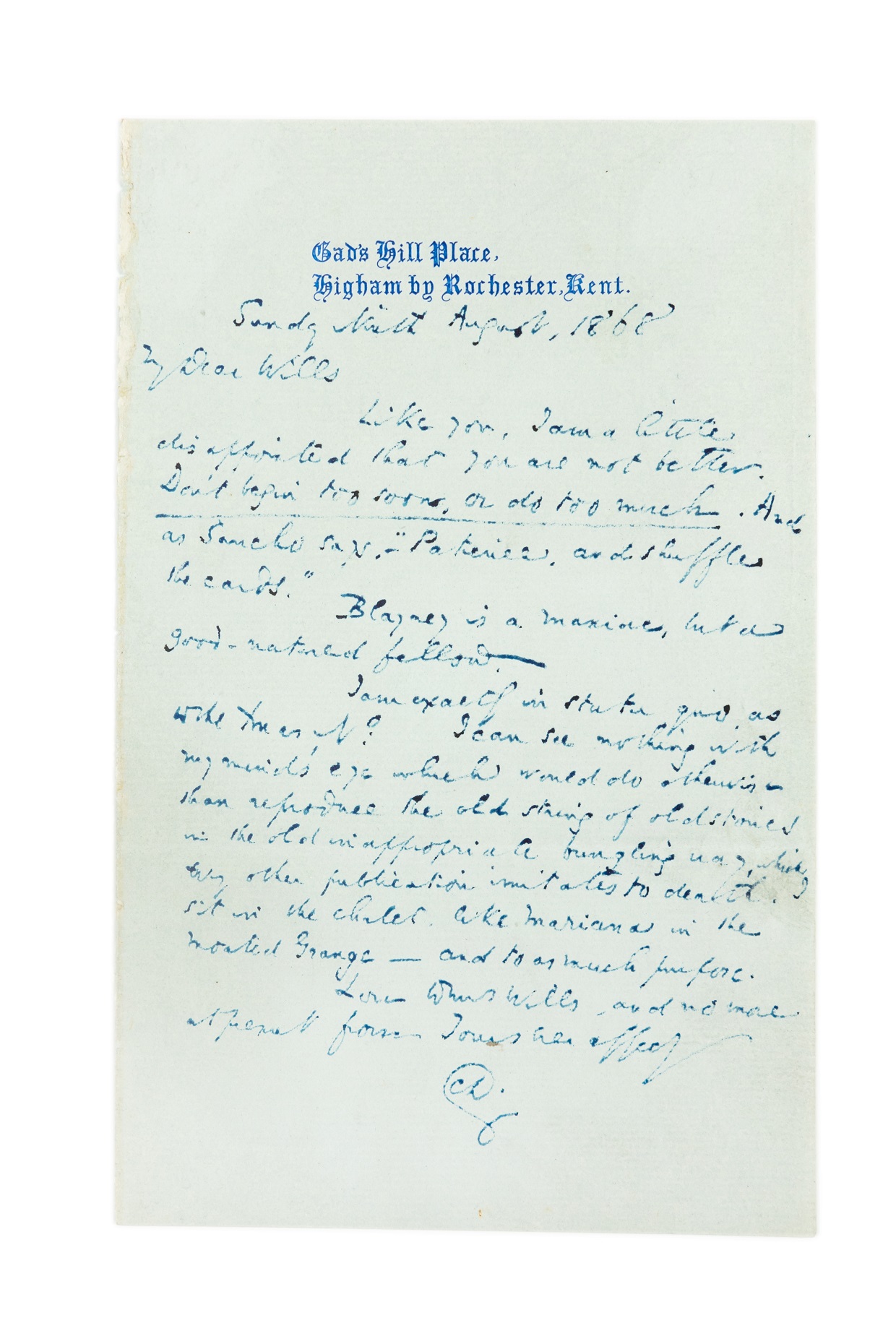
Dickens to Wills 1868 complaining about the glut of Christmas publications. / Courtesy of Charles Dickens Museum
No publications without illustrations
Dickens understood that illustrations of the book are as important as the text itself. Throughout his career, he always incorporated top illustrations to his works.
A Christmas Carol was famously illustrated by John Leech. The sketches were coloured and turned into plates, which the illustrator was not very satisfied with, however, Dickens was very pleased by this turnout. He continued working with Leech for his later Christmas books.
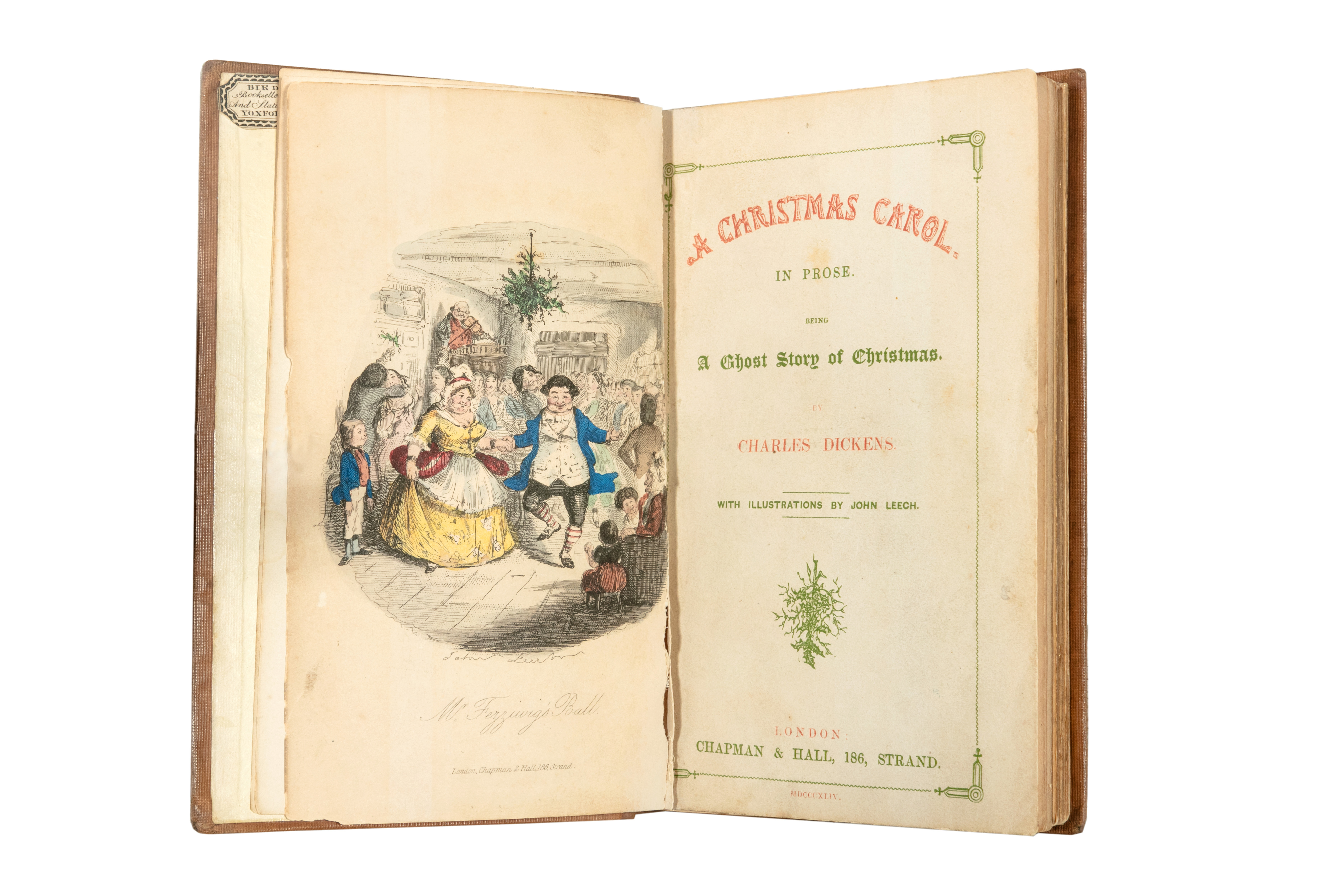
A Christmas Carol trial edition. Illustration by John Leech. / Courtesy of Charles Dickens Museum
Do not miss!
Once you head to the museum to get into that Victorian Christmas mood, make sure you check out these items:
- The first-ever Christmas postcard and Forms Stationers novelty envelope
- First editions of the five Dickens’ Christmas books
- The trial edition of A Christmas Carol
- Goldbeaters Arm
- Letters by Charles Dickens
- James Pollard print “Approach to Christmas”
Address: 48-49 Doughty St, Holborn, London WC1N 2LX
[googlemaps https://www.google.com/maps/d/embed?mid=1ttQ06bhGR2tDwKSsgLuuVKYaHNNju-66&w=640&h=480]
Tickets: 20 November – 19 April 2020
£9.50 Adult
£4.50 Child (6-16 years)
£7.50 Concessions
Free for children under six.
Contact: 020 7405 2127 or info@dickensmuseum.com
Words: Neringa Ruseckaite
Photos: Neringa Ruseckaite / Charles Dickens Museum

